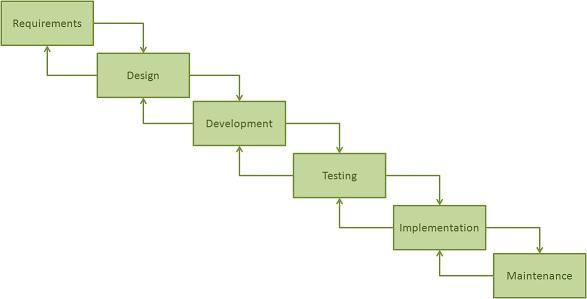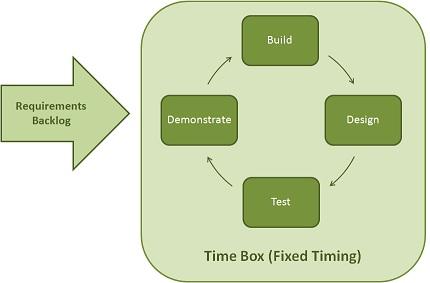Introduction
The essay highlights how Primavera managed change processes for effective development of projects. It shows the two models (waterfall and time boxed models) that Primavera used to implement change in which “marketers, product managers, developers, quality assurance, and executives worked together” (Martin and Schwaber, 2004). It shows issues and experiences at Primavera. Finally, it highlights how such processes can apply in other organizations.
Agile and Scrum Models
Agile and Scrum rely on iterative, highly collaborative, and people and result-oriented approaches to deliver incremental values in the project life cycle. The process involves coordination among project developers, marketers, and project sponsors.
Agile uses up-front analysis and design because it defines the entire project from the start based on a structured approach. It also puts importance on documentation with decentralized software development processes.
Conversely, Scrum produces self-organized and motivated teams. The process has extensive customer interactions to improve customer feedback. Scrum uses working software to determine project success as there are frequent deliveries based on every Sprint (Mayer, 2008).
This is the waterfall method of software development. The method has a chain of stages to make the development iterative with constant feedback to the previous stage of the model (fig. 1).

On the other hand, Primavera also relies on a time-boxed or fixed time to maximize the volume of activities (fig. 2). This is what Primavera calls Sprint. In this model, customers’ requirements set the task and the teams determine the amount of work for every Sprint. This model ensures that the team delivers the project within schedule without defects.

Agile helps in handling complex projects with constant changes coupled with rapid developments. On the other hand, Scrum ensures that the organization can only deliver products with desired functionality because it must test them at the end of every Sprint.
The company uses waterfall model for analyzing coders and designs. Scrum introduced a cross-functional team where every member of the team was responsible for increments for the project. Cross-functional teams inspect the project from “various perspectives in order to improve the overall quality of the product” (Martin and Schwaber, 2004).
Primavera had challenges with its approach to project or software developments. The company relied on “a command-and-control structure where the few decision-makers were never close to the implementing teams or the actual work” (Martin and Schwaber, 2004). However, Primavera experienced challenges as complexity of every task increased with the growth in customer base. The company also had “a strained relationship between developers and other departments” (Martin and Schwaber, 2004).
Together, these two models ensure that an organization develops a major release with functionality of two in a single release (Martin and Schwaber, 2004).
Primavera had trouble meeting the ever-changing market needs. There were also problems with meeting deadlines. The company spent a lot of time in meetings and planning until the project released became obsolete in the market. Thus, change was inevitable for Primavera.
The company started by changing the workplace environment and office space. This process resulted into the creation of ten teams of developers. As a result, teams built functionality in the company every month through brainstorming about the next important stages of developments. Teams relied on vision, mission, Sprint schedules, and charts for guidance.
The change process started within the company. In order to succeed, Primavera brought in an outside team from Object Mentor to assist in implantation of “Extreme Programming (XP) engineering practices and to help in improving the engineering infrastructure” (Martin and Schwaber, 2004). Object Mentor provided synergy to the company, maintained a high standard of software quality in every Sprint. Scrum development is “fast and requires tight controls and feedback” (Martin and Schwaber, 2004). XP provided Primavera with this control by using coordinated processes among teams. The company also applied Scrum to make sure that it followed a good principle of sound object-oriented design. Scrum ensured that the company “maintained solid systems, created clean code, cleaned legacy code, and kept the design and code clean for each Sprint” (Martin and Schwaber, 2004).
The company appreciated that software development was difficult. However, it had to develop what the market needed. Therefore, Primavera team worked together towards a common goal and engaged in constant communications. As a result, Primavera was able to produce a major release. The software had the functionality of two releases in one release. This release emerged from changes the company initiated.
Primavera practices highlight how every organization can use change strategies for success. Primavera shows that the process of change in an organization should include all departments and processes. At the same time, it should include simple changes to office design, space, and environment. It should create a work environment in which “marketers, product managers, developers, quality assurance, and executives worked together” (Martin and Schwaber, 2004).
Primavera shows that change should depend on requirements of a task instead of the task. At the center of a change process are constant communications, collaboration, planning, reporting, and feedback.
Discussion
This case demonstrates that roles of all stakeholders are vital for project success. They provide and clarify requirements, review progress, and implement new changes to a task. This system focuses on value delivery at every stage of the project.
Agile and Scrum are good in supporting and prioritizing long-term projects. They define the project from the beginning as well as provide micro planning at every Sprint. Combinations of these models encourage communication between team members and clients. At the same time, Scrum model enables the project team to identify risks due to constant testing of the project at every Sprint (Haas, 2007).
Agile and Scrum cannot eliminate all possible risks of the product at the beginning (Lynema, 2010). However, they allow the customer to understand minor details of the project because of the project breakdown into workable parts. The team can change the product based on the client’s feedback and eliminate risks of building the wrong product (Inglish, 2010). Scrum shows positive outcomes across several projects by maximizing time boxed model. At the same time, it also creates satisfaction among project developers. Scrum also enables developers to adapt to changing priorities and needs of customers.
Summary
Primavera shows how satisfying a client’s need is imperative through early and continuous delivery of practical products. Agile and Scrum allow organizations to make changes even in late stages of the project development. In all, Primavera’s strategy shows that customers and business people must collaborate in order to develop effective products.
Agile and Scrum reduce challenges of large projects by focusing on a given cycle. The waterfall model and time boxed model differ based on their approaches to project development. Primavera shows that a project team can achieve high results when they use both agile and scrum.
This article shows that change processes in organizations require inputs of all stakeholders. However, the process must rely on requirements of a task rather than the task itself.
References
Haas, K. B. (2007). The blending of traditional and agile project management. PM World Today, 9(5), 1-8.
Inglish, R. (2010). Agile-Scrum vs. Waterfall-Cycle Methodology. Web.
Lynema, E. (2010). Agile project management and the real world. Web.
Martin, R. C. and Schwaber, R. (2004). Best Practices in Scrum Project Management and XP Agile Software Development. Web.
Mayer, T. (2008). Essential Scrum. A short introduction to Scrum and its underlying Agile principles. Web.
